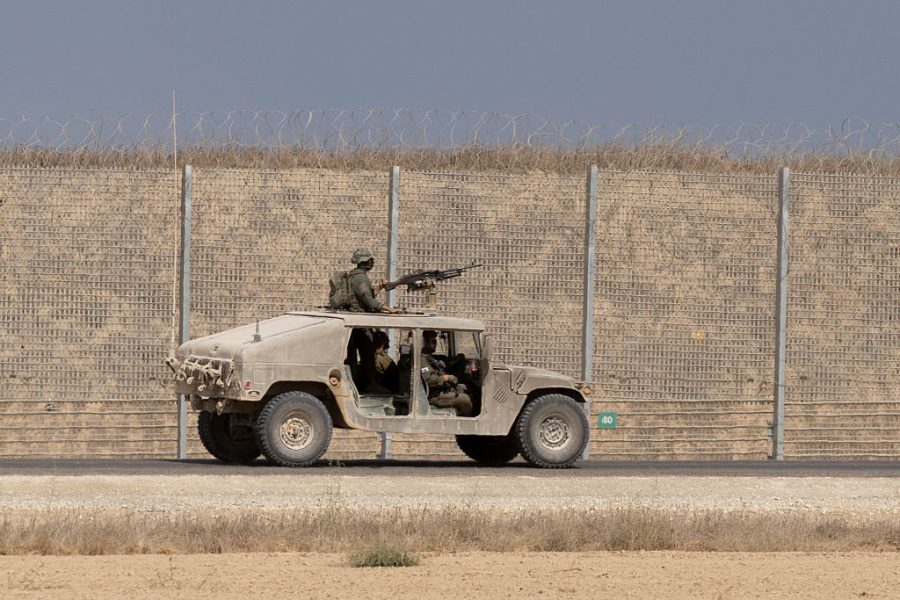Israel’s operation to conquer Gaza city is now entering its third day. Two IDF divisions are engaged on the ground. These are Division 98, which is the IDF’s airborne formation, and Division 162, a mechanised unit. An additional division, the 36th, is set to join the fighting in the coming days. As of now, Israeli forces are advancing from the Shejaya, Sheikh Radwan and Tal al Hawa neighbourhoods.
Israel has established two exit routes for civilians wishing to leave the area. The first main route is the coastal road leading down to the designated safe zone in al-Mawasi. The IDF has temporarily also established a second route on the central Salah al Din road. Around 650,000 civilians are thought to remain in Gaza City, along with an estimated 3,000 Hamas fighters.
Two years of war and the Iran-led regional alliance is largely in ruins
While all Israeli military moves are now accompanied by a cacophony of hostile propaganda, against which Israel seems to employ little effort to defend itself, the political and military logic behind the current move is fairly clear and unremarkable. This is the final act in an until-now successful defensive war that Israel has been conducting over the last two years against the regional alliance of which Hamas is a part. This war was not Israel’s choice. The Hamas assault and massacre of 7 October precipitated it. But the events of the last two years have effected a profound shift in the geopolitics of the region, largely in Israel’s favour. The final stage of conventional operations in Gaza is intended to form the endgame of this achievement.
Hamas is part of a regional alliance led by the Islamic Republic of Iran. Over the last three decades, this alliance has been following a doctrine of unconventional warfare, intended to surround the Jewish state with hostile Islamist militias. The goal was to use these political-military organisations to subject Israel to a long siege, intended to result in its eventual collapse and disappearance.
By 2023, thanks to a combination of Iranian skill and regional circumstance, this goal had advanced considerably. Iranian proxies, allies or clients were in power in Gaza, Lebanon, Syria, Iraq and a large swathe of Yemen. Currently available evidence suggests that the 7 October massacres were not an agreed-upon starting gun by this alliance for a general assault on Israel. Rather, Hamas appears not to have informed its allies and patrons in advance of the precise planning and timing for the attacks.
The result was that the response of Iran and its various proxies was partial and piecemeal. This has enabled Israel to deal with the various elements of the Iran-led bloc in succession, rather than simultaneously.
The results are unambiguous and profoundly significant. Lebanese Hezbollah, first to enter the fray on 8 October, was broken by an Israeli counter-assault beginning in September 2024 after months of missile exchanges. The Assad regime in Syria, without its vital Lebanese ally available to defend it, was destroyed by its domestic opponents in December 2024.
The Iranian regime itself entered the arena in April 2024 and then again in October of that year. Its air defences were destroyed at that time by Israel. This paved the way for Israel and US action to cripple the Iranian nuclear programme in June of this year. The Yemeni Ansar Allah movement began attacks on Israel in November 2023. These have, with a couple of exceptions, failed to penetrate Israeli airspace. Israel’s recent response was to kill the Houthi prime minister, Ahmed Ghaleb Nasser al-Rahawi, and a number of his colleagues.
The Houthis, perhaps alone in the Iranian alliance, can nevertheless claim a considerable strategic achievement from the events of the last two years. This success was not registered against Israel, however, but against the international order. The organisation’s attacks on shipping on the Gulf of Aden-Red Sea route have resulted in a reduction of traffic of 85 per cent on that vital maritime trade artery.
Two years of war, then, and the Iran-led regional alliance is largely in ruins. Yet of all its component parts, one remains in the field. Hamas, which started the war, is as yet undefeated in its Gaza fiefdom. The Gaza Islamists are still in control of around 25 per cent of the Strip. What explains their durability? How is it that the IDF, which crippled the more powerful Lebanese Hezbollah, which established the freedom of the skies over Iran for itself, which found and killed the Houthis’ governing cabinet, has not yet finished the small jihadi militia which set the whole thing in motion?
The answer is not so mysterious. For much of the last two years, Israel has not been solely engaged in an attempt to destroy the Hamas authority in Gaza. Rather, it has been balancing two contradictory goals: namely seeking to weaken and diminish Hamas while at the same time engaging in negotiations with the rulers of Gaza for the freeing of the Israeli hostages taken on 7 October. Electing not to choose between these options, but rather to pursue both of them, has inevitably slowed the progress of both. The IDF has, to a considerable extent in Gaza, been engaged in raids intended to soften Hamas’s negotiating position over the last two years, rather than the permanent seizure of territory. As an example, I accompanied the 36th Division into Shejaiya in December of 2023. The IDF is now once more engaged in this area.
The results of this combined strategy are not unimpressive. After two years, Hamas is massively weakened. The great majority of the hostages have been freed. However, the duality cannot be maintained indefinitely.
Israel has determined that the authority that carried out the massacres of 7 October must cease to exist. This can either be achieved or not achieved. For it to happen, the IDF must conquer the totality of the area of that authority’s rule. This means taking the remaining 25 per cent of Gaza. Should this not take place, then despite Israel’s other achievements, the dangerous message will be conveyed to the many enemies of the Jewish state that you can carry out a massacre of Israelis and survive, on condition that you take Israeli civilian hostages. Should it be achieved, then Israel will place the seal on a remarkable two-year campaign in which a region-wide alliance committed to its destruction will itself have been defeated and severely damaged.







Comments